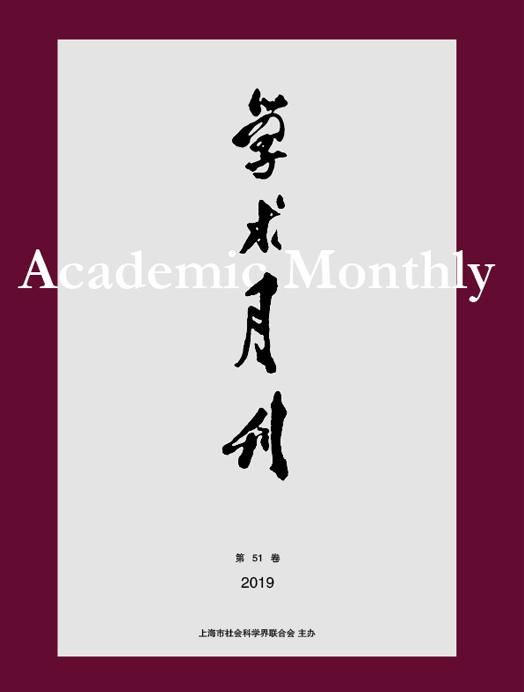-
[1]
. . Academic Monthly,
2017, 49(09): 13-16.
-
[2]
. . Academic Monthly,
2016, 48(04): 54-62.
-
[3]
Sini MA
, Gangsheng BAO
. “Balanced Anti-Epidemic”: A Study on the Prevention and Control of the COVID-19 Epidemic in the Pre-Omicron Period. Academic Monthly,
2022, 54(4): 78-99.
-
[4]
Pingxin LU
. On Interpretation of the Right to Equality: Structural Reason and Hermeneutic Analysis. Academic Monthly,
2022, 54(11): 107-120.
-
[5]
LI Jingkui
. Labor Contract Law,Enterprise Boundary and New Labor Dual Market. Academic Monthly,
2023, 55(8): 61-79.
-
[6]
Huiming ZHANG
, Tao ZHANG
. Deepening Reform of State Owned Enterprises: From “Classification” to “Stratification”. Academic Monthly,
2019, 51(1): 59-67.
-
[7]
. . Academic Monthly,
2017, 49(07): 35-44.
-
[8]
Shaoqing HUANG
, Yi WANG
, Li ZHAO
. Administrative Examination and Approval Reform, Rule of Law and Enterprises’ Innovation Performance. Academic Monthly,
2020, 52(6): 57-70.
-
[9]
Da’an HE
. Stages and Conditions of the Enterprise Digital Transformation. Academic Monthly,
2022, 54(4): 38-49.
-
[10]
,
. . Academic Monthly,
2016, 48(06): 37-52.
-
[11]
,
. . Academic Monthly,
2017, 49(10): 55-65.
-
[12]
,
,
. . Academic Monthly,
2016, 48(10): 55-66.
-
[13]
,
,
. The Mystery of Middle-and-Small Scaled Private Zombie Firms. Academic Monthly,
2018, 50(03): 75-86.
-
[14]
Zhiyang LIU
, Lufeng WANG
. The Emergence Logic of Social Enterprise in China. Academic Monthly,
2019, 51(10): 82-91.
-
[15]
Tie LYU
, Zaichi LI
. Digital Transformation in Manufacturing SMEs. Academic Monthly,
2022, 54(10): 59-69.
-
[16]
Yuanyuan JI
, Pingfang ZHU
. Digital Economy Enabling the Upgrading of Industrial Structure: Demand Promoting and Supply Optimization. Academic Monthly,
2022, 54(4): 63-77.
-
[17]
Weili LI
. Neo-Danweism: the Nexus Politics in Contemporary Chinese Grassroots Governance Structure. Academic Monthly,
2019, 51(8): 78-88.
-
[18]
Zhiyang LIU
, Yongchang CHEN
. Social Enterprise’ Hybrid Logic and Cross-sectoral Collaboration. Academic Monthly,
2021, 53(11): 85-98.
-
[19]
Huihua NIE
, Guangwu LI
, Chen LI
. The Eight Key Questions about Subsidies for Enterprises. Academic Monthly,
2022, 54(6): 47-60.
-
[20]
Shaoqing HUANG
, Siyi PAN
, Hao SHI
. Anti-Corruption, Transformation of Government-Business Relationships and Firm Performance. Academic Monthly,
2018, 50(12): 25-40.




 沪公网安备 31010102003103号
沪公网安备 31010102003103号 DownLoad:
DownLoad:






